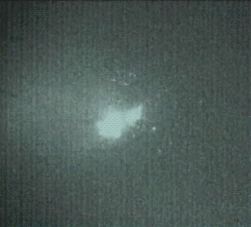USA-193
[4] USA-193 was part of the NRO's Future Imagery Architecture (FIA), which was begun in 1997 to produce a fleet of inexpensive reconnaissance satellites, but has become the agency's most spectacular failure.
[5] USA-193 was initially developed by Boeing, which won the contract in 1999, beating out Lockheed Martin with proposals for innovative electro-optics and radar.
But after cost overruns, delays, and parts failures, NRO sent the contract to Lockheed, which built USA-193 around the Boeing radar design.
[1][non-primary source needed] In late January 2008, reports from anonymous U.S. officials indicated a U.S. spy satellite, later confirmed as USA-193,[1] was in a deteriorating orbit and was expected to crash into Earth within weeks.
[16] The satellite malfunctioned shortly after deployment and was intentionally destroyed 14 months later on 21 February 2008 by a modified SM-3 missile fired from the U.S. Navy warship USS Lake Erie (CG-70), stationed west of Hawaii.
On 29 January 2008, an Associated Press story quoted U.S. Air Force General Gene Renuart as saying that contingency plans were being made, since intact pieces of the satellite "might re-enter into the North American area".
[22] In respecting the Space Liability Convention, the United States vowed to pay for any damage or destruction caused by their failed satellite.
[4] On 14 February 2008, U.S. officials announced the plan to destroy USA-193 before atmospheric reentry, stating that the intention was "saving or reducing injury to human life".
[26] General James Cartwright confirmed that the United States Navy was preparing to launch an SM-3 missile to destroy the satellite, at an altitude of 247 km (153 mi), shortly before it entered Earth's atmosphere.
The United States Department of Defense (DoD) expressed a "high degree of confidence" that the fuel tank was hit and destroyed.
[40] While most of this debris re-entered the Earth's atmosphere within a few months, a few pieces lasted slightly longer because they were thrown into higher orbits.



